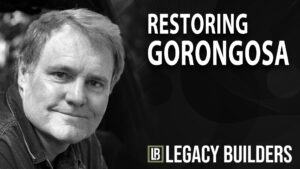Gulf Oil Spill: Questions and Answers

Gulf Oil Spill: Questions and Answers
Source: IRS.gov
Posted: 7/2/2010
Q1. Is a taxpayer required to include in gross income payments the taxpayer receives for lost business income, lost wages or lost profits?
A1. Yes. The law requires that a taxpayer include in gross income payments the taxpayer receives for lost business income, lost wages or lost profits. For information on whether estimated tax payments may be required, see Publication 505, Tax Withholding and Estimated Tax.
A self-employed individual who receives a payment that represents compensation for lost income of the individual’s trade or business should include the amount of the payment in net earnings from self-employment for purposes of the self-employment tax. For more information about reporting self-employment income and paying self-employment tax, see Publication 334, Tax Guide for Small Business (For Individuals Who Use Schedule C or C-EZ).
***Generally, a payment to an individual to compensate for lost wages will not be wages for purposes of the social security tax and Medicare tax because it is not an actual payment for employment within the meaning of the law. These payments will also generally not be subject to income tax withholding unless backup withholding applies. See A2, below, for a discussion of backup withholding. However, if the payment is made by an employer to its own employees, or by a third party to employees of another employer in satisfaction of an obligation of that employer to its employees, the payment may be subject to social security tax, Medicare tax, and income tax withholding.
Q2. Are payments that are made to an individual for lost business income, lost wages, or lost profits required to be reported to the IRS by the person making the payment?
A2. Generally, yes. A person making payments to an individual for lost business income lost wages or lost profits must report the payments to the IRS on a Form 1099-MISC, Miscellaneous Income if the payments aggregate $600 or more. Generally, these payments are subject to backup withholding at a rate of 28 percent if the individual fails to furnish the individual’s taxpayer identification number to the payor at or before the time of payment.
A payment that is treated as a payment of wages is subject to reporting on Form W-2, Wage, and Tax Statement, and to the same social security tax, Medicare tax and income tax withholding rules that apply to regular wage payments made by an employer to an employee. For more information about withholding from employees’ wages, see Publication 15, (Circular E) Employer’s Tax Guide.
Under current law, a person making payments to a corporation for lost business income or lost profits is not required to report those payments to the IRS. However, a person who makes payments to a partnership, limited liability company or other non-corporate entity for lost business income or lost profits generally is required to report those payments to the IRS in the same manner as for payments to individuals, and the payments are subject to backup withholding at a rate of 28 percent if the entity fails to furnish its employer identification number to the payor at or before the time of payment.
Q3. Is a taxpayer required to include in gross income payments the taxpayer receives for property damage or destruction?
A3. A taxpayer is not required to include in gross income payments the taxpayer receives for property damage or destruction if the payments do not exceed the taxpayer’s adjusted basis in the damaged or destroyed property. If the payments for property damage or destruction exceed the taxpayer’s adjusted basis in the damaged or destroyed property, the taxpayer will realize gain for federal income tax purposes. If the damage or destruction is an “involuntary conversion,” the taxpayer may defer the tax on any gain if the taxpayer purchases qualifying replacement property that costs at least as much as the payments received for the damaged or destroyed property. (Tax is deferred until the qualifying replacement property is later sold.) An involuntary conversion occurs when a taxpayer’s property is destroyed, stolen, condemned or disposed of under the threat of condemnation and the taxpayer receives other property or money in payment, such as a condemnation award or insurance. See Publication 544, Sales and Other Dispositions of Assets. A person making payments for property damage or destruction is not required to file information returns with the IRS reporting the payments.
Q4. Can a taxpayer claim a casualty loss deduction if payments the taxpayer receives for a property that has been damaged or destroyed are less than the taxpayer’s adjusted basis in the property?
A4. A taxpayer may be able to claim a casualty loss deduction if the payments (including insurance proceeds or payments for damages) the taxpayer receives or reasonably expects to receive, are less than the taxpayer’s adjusted basis in the property. See A5, below, for a discussion of how to compute the possible deduction.
Q5. How does a taxpayer determine the amount the taxpayer may claim as a casualty loss deduction?
A5. With respect to personal-use property, the taxpayer generally may claim as a casualty loss deduction the lesser of (1) the difference between the fair market value of the property immediately before and after the casualty; or (2) the adjusted basis of the property. The amount of the deduction is reduced by any insurance proceeds or other payments the taxpayer receives or reasonably expects to receive. An individual taxpayer must reduce the amount claimed for each casualty loss deduction for a personal-use property by $100, and reduce the total amount of casualty loss deductions claimed for personal-use property for one taxable year by 10 percent of the taxpayer’s adjusted gross income.
With respect to the business or income-producing property that is partially destroyed, the taxpayer generally may claim as a casualty loss deduction the lesser of (1) the difference between the fair market value of the property immediately before and after the casualty; or (2) the adjusted basis of the property. The amount of the deduction is reduced by any insurance proceeds or other payments the taxpayer receives or reasonably expects to receive. However, if business or income-producing property is completely destroyed and its adjusted basis exceeds its fair market value, the taxpayer may claim a casualty loss deduction equal to the adjusted basis of the property, reduced by payments the taxpayer receives or reasonably expects to receive for the property (including insurance proceeds or payments for damages).
Q6. How does a taxpayer establish the decrease in the fair market value of the property after a casualty?
A6. A taxpayer may use either an appraisal or the cost to repair or clean up the property to determine the decrease in the fair market value of the property after a casualty.
Q7. How does a taxpayer report a casualty loss deduction on the tax return?
A7. A taxpayer claims a casualty loss deduction on the tax return for the year in which the casualty occurred. An individual taxpayer claims a casualty loss deduction for a personal-use property by reporting the amount of the loss on Form 4684, Casualties and Thefts, and claiming an itemized deduction on Schedule A, Itemized Deductions, of the taxpayer’s return. A taxpayer claims a casualty loss deduction for business or income-producing property on Section B of Form 4684, and on Form 4797, Sales of Business Property, if required. For more information on casualty losses, see Publication 547, Casualties, Disasters, and Thefts, and Publication 584, Casualty, Disaster, and Theft Loss Workbook.
Q8. Is an individual required to include in gross income payments the individual receives for personal physical injuries or physical sickness, or for emotional distress that is attributable to personal physical injuries or physical sickness?
A8. No. An individual generally is not required to include in gross income payments the individual receives on account of personal physical injuries or physical sickness. Personal physical injuries include observable bodily harm such as bruises, cuts, swelling, and bleeding. Likewise, an individual is not required to include in gross income payments the individual receives for emotional distress that is attributable to personal physical injuries or physical sickness. Payments for personal physical injuries or physical sickness, or emotional distress attributable to personal physical injury or physical sickness, are not required to be reported on an information return filed with the IRS by the person making the payment.
Q9. Is an individual required to include in gross income payments the individual receives for emotional distress (or symptoms of emotional distress such as insomnia, headaches or stomach disorders) that is not attributable to personal physical injuries or physical sickness?
A9. Yes. The law requires an individual to include in gross income payments the individual receives for emotional distress (or symptoms of emotional distress such as insomnia, headaches or stomach disorders) that is not attributable to personal physical injuries or physical sickness. However, an individual excludes from gross income payments for emotional distress up to the number of medical care expenses the individual paid related to the emotional distress if the individual did not deduct the expenses in a prior taxable year.
Q10. Are payments made to an individual for emotional distress that is not attributable to personal physical injuries or physical sickness required to be reported to the IRS by the person making the payment?
A10. Yes. A person making a payment to an individual for emotional distress that is not attributable to personal physical injuries or physical sickness must report the payment to the IRS on a Form 1099-MISC, Miscellaneous Income if it is $600 or more. If the individual does not furnish the individual’s taxpayer identification number to the payor, the payor must backup withhold on the payment at a rate of 28 percent.
—————————————————————————————————————————————————————————————————————
We hope you found this article about “Gulf Oil Spill: Questions and Answers” helpful. If you have questions or need expert tax or family office advice that’s refreshingly objective (we never sell investments), please contact us or visit our Family office page or our website at www.GROCO.com. Unfortunately, we no longer give advice to other tax professionals gratis.
To receive our free newsletter, contact us here.
Subscribe our YouTube Channel for more updates.

Alan Olsen, is the Host of the American Dreams Show and the Managing Partner of GROCO.com. GROCO is a premier family office and tax advisory firm located in the San Francisco Bay area serving clients all over the world.
Alan L. Olsen, CPA, Wikipedia Bio

GROCO.com is a proud sponsor of The American Dreams Show.

The American Dreams show was the brainchild of Alan Olsen, CPA, MBA. It was originally created to fill a specific need; often inexperienced entrepreneurs lacked basic information about raising capital and how to successfully start a business.
Alan sincerely wanted to respond to the many requests from aspiring entrepreneurs asking for the information and introductions they needed. But he had to find a way to help in which his venture capital clients and friends would not mind.
The American Dreams show became the solution, first as a radio show and now with YouTube videos as well. Always respectful of interview guest’s time, he’s able to give access to individuals information and inspiration previously inaccessible to the first-time entrepreneurs who need it most.
They can listen to venture capitalists and successful business people explain first-hand, how they got to where they are, how to start a company, how to overcome challenges, how they see the future evolving, opportunities, work-life balance and so much more..
American Dreams discusses many topics from some of the world’s most successful individuals about their secrets to life’s success. Topics from guest have included:
Creating purpose in life / Building a foundation for their life / Solving problems / Finding fulfillment through philanthropy and service / Becoming self-reliant / Enhancing effective leadership / Balancing family and work…

MyPaths.com (Also sponsored by GROCO) provides free access to content and world-class entrepreneurs, influencers and thought leaders’ personal success stories. To help you find your path in life to true, sustainable success & happiness. It’s mission statement:
In an increasingly complex and difficult world, we hope to help you find your personal path in life and build a strong foundation by learning how others found success and happiness. True and sustainable success and happiness are different for each one of us but possible, often despite significant challenges.
Our mission at MyPaths.com is to provide resources and firsthand accounts of how others found their paths in life, so you can do the same.
The AI Revolution: Avoiding a Future Controlled by the Few
Artificial Intelligence (AI) is at an inflection point. While most discussions center around the potential and risks of AI, Aldo Carrascoso, CEO and Co-Founder of Vivum AI, offers a different perspective—AI is at its own “War of Currents” moment, much like the battle between AC and DC electricity in the early 20th century. In a…
Partnerships for Strategic Conservation – Barry Gold
Barry Gold Outlines a Bold Vision for Conservation and Sustainable Development Africa is on the brink of a transformation—one that will define the future of the continent and, ultimately, the planet. With its population projected to double from 1.3 billion today to 2.2 billion by 2050 and reach nearly 4 billion by 2100, the demand…
Restoring Gorongosa National Park
Greg Carr’s Mission to Restore Gorongosa National Park: A Story of Conservation and Community Greg Carr’s journey from a successful technology entrepreneur to a dedicated philanthropist restoring Mozambique’s Gorongosa National Park is nothing short of remarkable. What began as a search for a meaningful way to give back has evolved into one of the most…
The Ownership Revolution: How ESOPs Can Strengthen the Middle Class
The Ownership Revolution: How ESOPs Can Strengthen the Middle Class For decades, the American middle class has been the foundation of economic stability, embodying the aspirations of millions. Yet, as Chester Woolley eloquently highlighted in his recent speech, this once-thriving segment of society is in decline. “The middle class seems to be shrinking. It doesn’t…




